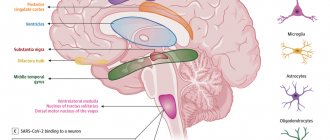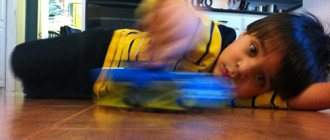Classification
Doctors identify several variants of scalene muscle syndrome depending on the injuries involved:
- neurogenic type - pressure appears in the plexus of the shoulders, which causes compression of certain nerves and roots;
- venous type – compression occurs in the area of the subclavian vein;
- arterial type - the subclavian artery suffers, the rarest form of pathology.
The combination of scalene muscle syndromes is also possible when extensive sources of damage are involved.
What happens in a crushed limb?
Tissue necrosis occurs. With prolonged compression by a foreign object, the release of the limb entails rapid death due to the sudden release of decomposition products of dead tissue into the blood and the development of acute renal failure due to blockage of the renal glomeruli. With positional compression, all pathological processes occur much more slowly. There is a distinction between long-term compression syndrome and positional compression. But the outcome, if left untreated, is the same: acute renal failure and death. Treatment methods also differ: when crushing, a tourniquet is applied to the compressed limb. (Then it is subject to mandatory amputation to save life). With positional compression, the limbs are not amputated. As a rule, patients seek help very late, with a developed clinical picture, and it is simply not advisable to amputate a limb.
Another difference. Once a limb is amputated, there are no conditions for complications from prolonged compression. Dead tissue has been removed. Decomposition products will not enter the blood. Exceptions are made very rarely. With positional compression, the products have already entered the bloodstream, it is necessary to fight the inevitably developing acute renal failure.
Symptoms
Having woken up after deep intoxication, the patient feels numbness in the compressed limb, possibly a feeling of fullness. Active rubbing of the affected area of the body does not bring success. The patient does not seek medical help for a day or two or three. When a limb (or another part of the body) completely loses sensitivity , movements are sharply limited, swelling increases, and skin detachment occurs with the formation of blisters (conflict), patients turn to doctors.
In places of compression, hyperemic areas of the skin with a purplish-bluish tint may be observed.
Hemorrhagic rashes, abrasions, and hematomas are detected. Arterial pulsation is absent or sharply weakened. Changes in soft tissues already in the early period are accompanied by severe intoxication, which worsens as changes in compressed tissues increase.
It manifests itself as lethargy, lethargy, dry mouth, malaise, nausea, vomiting, increased body temperature to 38 degrees and above.












